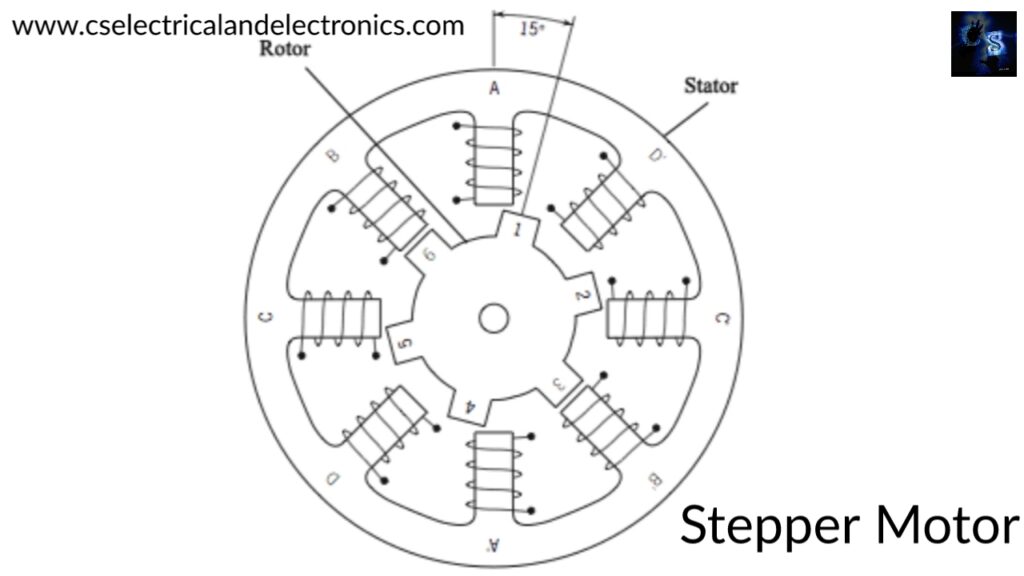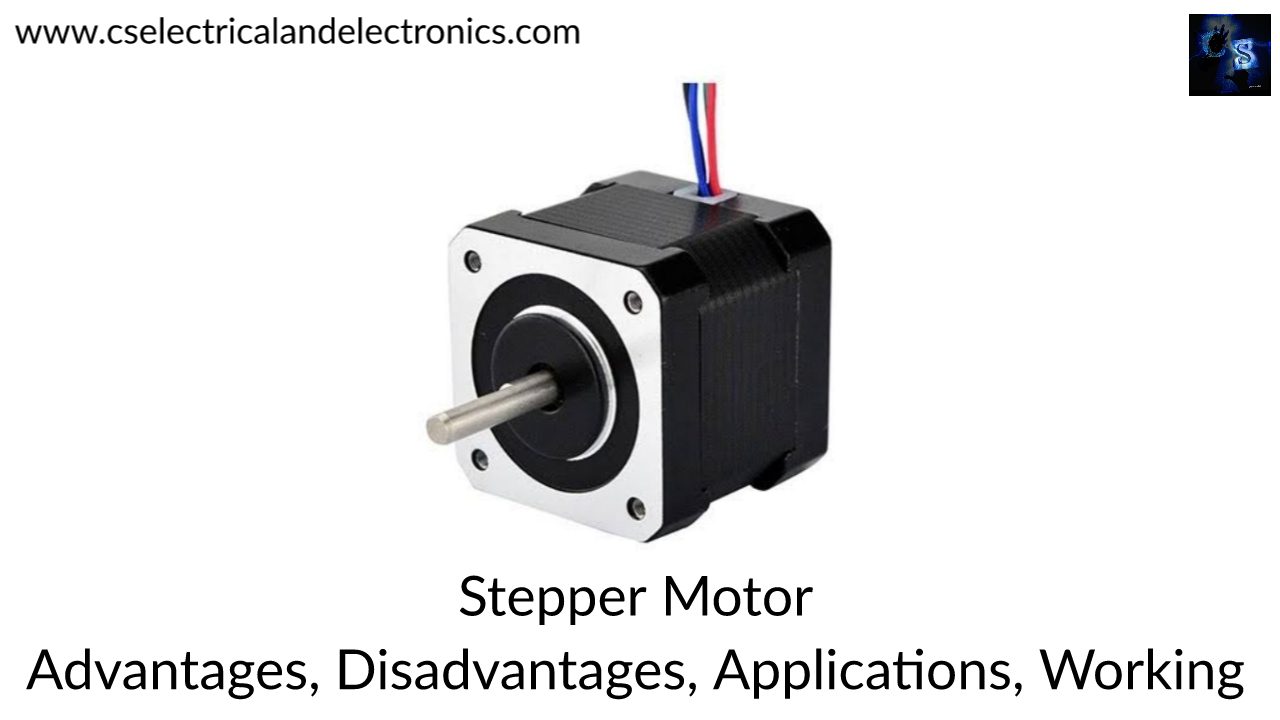Stepper Motor, Advantages, Disadvantages, Applications, Working
Hello guys, welcome back to my blog. In this article, I will discuss the stepper motor, the advantages of the stepper motor, the disadvantages of the stepper_motor, the applications of the stepper_motor, the working of the stepper motor, etc.
If you have any doubts related to electrical, electronics, and computer science, then ask question. You can also catch me @ Instagram – Chetan Shidling.
Also, read:
- Top 10 Best Ceiling Fans For Home, Shop, School, Colleges.
- 200+ Electric Vehicle Projects For Engineers, MTech, Ph.D., Diploma.
- What Is Fuzzy Logic, Working, Advantages, Disadvantages, Applications.
Stepper Motor
It is an electromechanical digital device in which input is an electrical signal and the output we are getting is mechanical. It is also a digital device because it requires pulses. Stepper motor is a special type of synchronous motor which is used to rotate the rotor for a specific number of degrees for every electric pulse received by its control unit or 15 degrees per pulse.
It is a motor that can rotate in both directions I.e., clockwise and anti-clockwise, move-in precise angular increments in degrees, sustain a holding torque at zero speed, and can be controlled with digital signals. It moves in angular positions or angular increments called steps which responses to a digital pulse to the electric drive circuit.
Working Of Stepper Motor

The stepper motor works on the principle that the rotor aligns in a particular position with the teeth of the excitation pole in a magnetic circuit. The minimum reluctance path exists with the excitation pole The excitation depends on the number of input pulses. It actuates a train of step movements in response to the train of input pulses.
The output of a stepper motor is completely determined by the number of input pulses given to the system. The step movement can be either angular or linear and it can be either in the clockwise or anti-clockwise direction. Each pulse input actuates one step movement and each revolution of the stepper motor consists of a number of discrete step movements.
The step size is typically between 1.5 to 30 degrees. Generally, these motors are manufactured with steps per revolution. These step motors are either bipolar which requires two power sources or unipolar which requires only one power source.
Step angle: The angle through which the shaft of the stepper motor starts rotating for each command pulse is known as the step angle.
Types Of Stepper Motors
Stepper motors are classified based on structure and performance:
- Variable reluctance stepper motor
- Permanent magnet stepper motor
- Permanent magnet hybrid stepper_motor
It consists of a rotor which is made of a permanent magnet and the stator is made of electromagnets. When the supply is given to the winding the stator develops a magnetic field within the stator. With the help of this rotating magnetic field, the rotor in the motor starts to move.
Advantages Of Stepper Motor
- Simple construction and it works in any situation.
- Compatible digital systems.
- No sensors are needed for the position and speed sensing as these are directly obtained by counting input pulses and periodic counting input pulses if speed information is needed.
- Flexibility and provides a constant holding torque without the need for the motor to be powered.
- Stepper motors are safer.
- Stepper motors are very reliable and have low accuracy.
- Excellent response to starting and stopping.
- Different kinds of rotational speeds by which we can realize as the speed is proportional to the frequency of the input pulses.
Disadvantages Of Stepper Motor
- The efficiency of the stepper motor is low.
- Resonance is the main problem that occurs in variable reluctance motors.
- The feedback loop is not used.
- These motors produce extremely high noise.
- Not easy to operate extremely at high speeds.
- Stepper_motors cannot run or rotate at high speeds but have a high holding torque.
Applications Of Stepper Motor
- Stepper_motors are used as paper feed motors in typewriters and printers.
- These motors are used for positioning print heads, pens in X-Y plotters.
- Stepper motors are used in machine tools.
- Stepper motors are used in cameras for automatic controlling of focus and zoom functions.
- These motors are used for security purposes.
- The stepper_motor is used for precise positioning with a motor, such as robotics, antennas, hard disk drives, telescopes, and some toys.
- Printers
- CNC machines
- 3D printers
- Laser and optics
- Industrial machinery
I hope this article may help you all a lot. Thank you for reading.
Also, read:
- 10 Tips To Maintain Battery For Long Life, Battery Maintainance
- 10 Tips To Save Electricity Bills, Save Money By Saving Electricity
- 100 (AI) Artificial Intelligence Applications In The Automotive Industry
- 100 + Electrical Engineering Projects For Students, Engineers
- 1000+ Automotive Interview Questions With Answers
- 1000+ Control System Quiz, Top MCQ On Control System
- 1000+ Electrical Machines Quiz, Top MCQs On Electrical Machines
- 1000+ MATLAB Simulink Projects For MTech, Engineering Students

